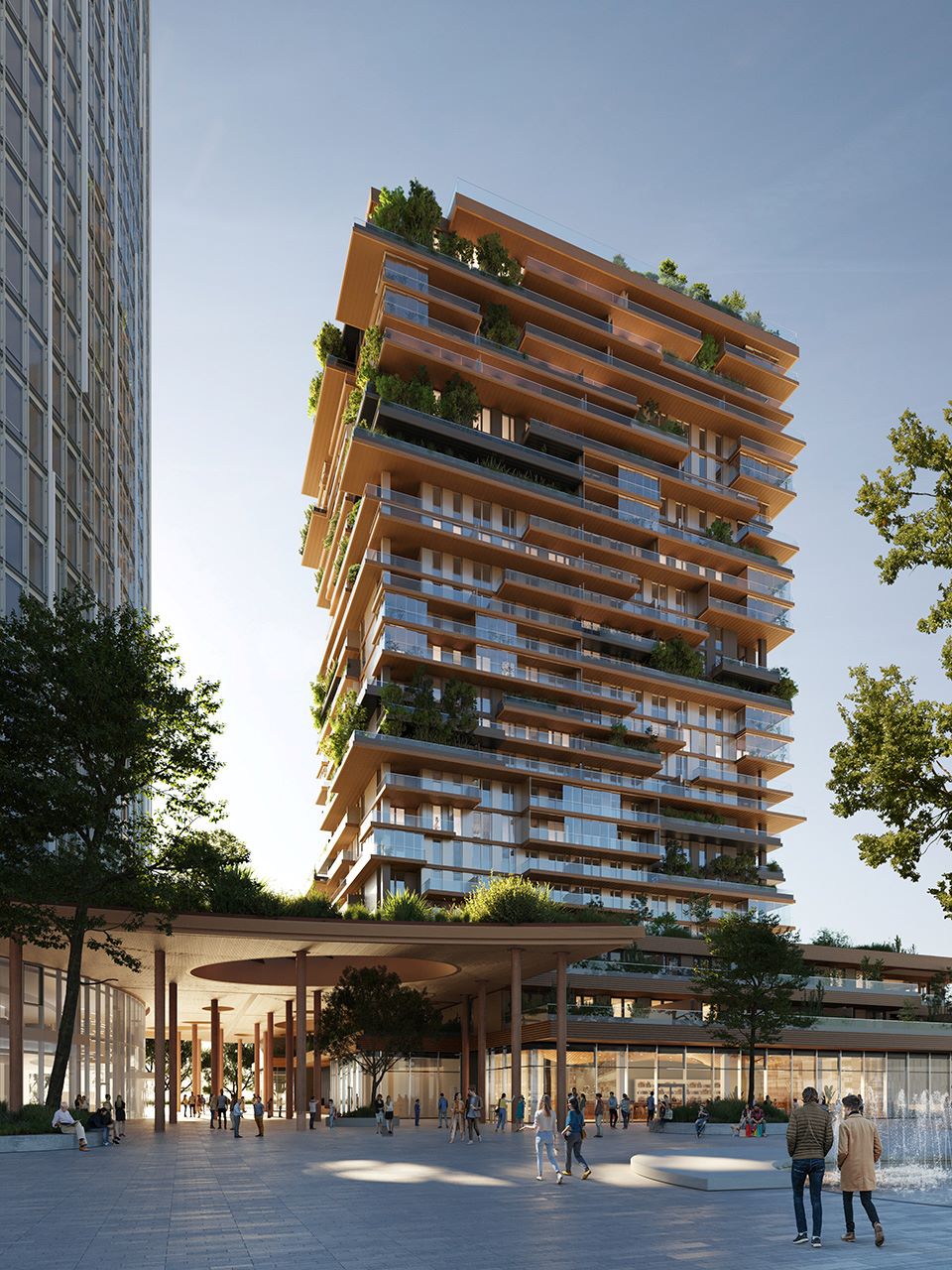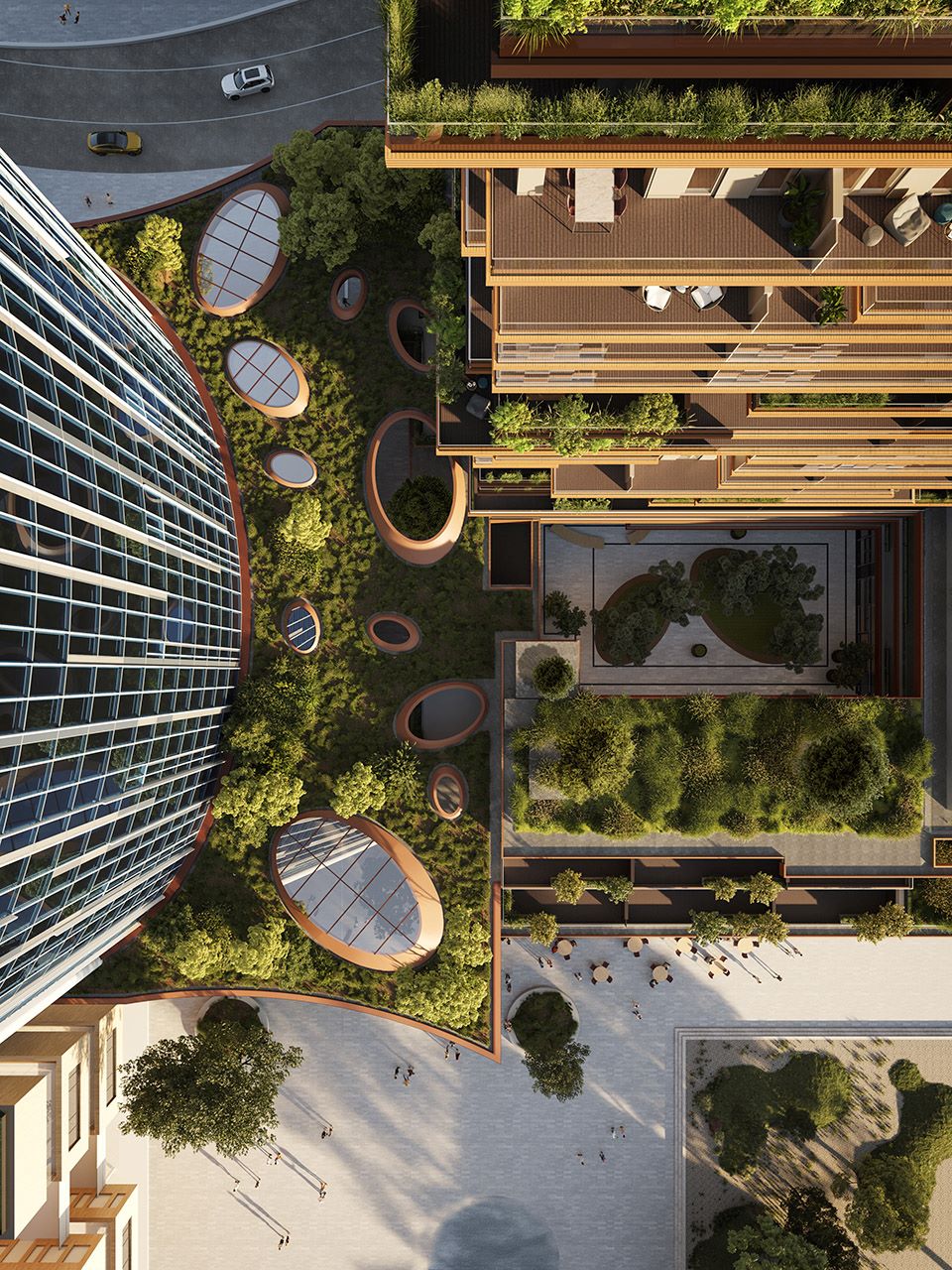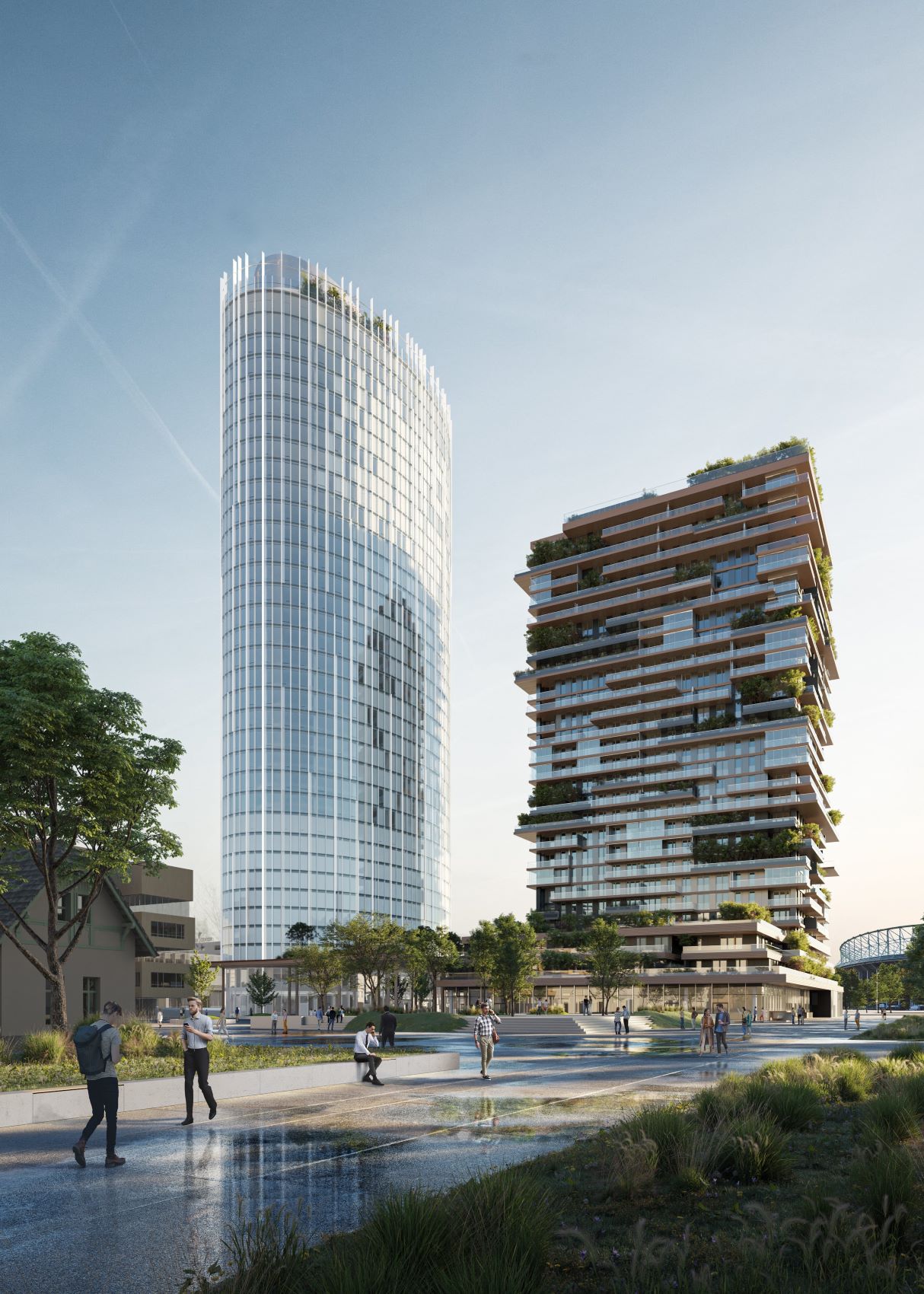In the next years, Vienna skyline will change: the Italian architect Mario Cucinella has in fact recently won a contest to build the two multifunctional towers GRÜNBLICK and WEITBLICK – one for residential purposes and the other for the tertiary sector – in the heart of Viertel Zwei, one of the liveliest city districts.
The greatest design challenge faced by the firm MCA – Mario Cucinella Architects was the need to put two big volumes with different functions inside a limited space like the Prater Park in Vienna, enabling two architectures with a strong identity to interact with the context.

Suspended spaces between park and city
The towers are about 120 m and 90 m high respectively, with a total gross floor area of approximately 85,000 square metres, and they contain spaces designed to a very high standard of quality that are ideal for living and working.
The two buildings are connected by a canopy, that is enhanced with planting and acts as a ‘covered walkway’ aligned precisely on the most important urban axis of the new neighbourhood. It also provides protection from downdraughts, which can often make the areas around tall or very tall buildings very inhospitable. The particular shape of the canopy was designed to incorporate large oval openings whose edges act as spoilers that protect the spaces below, enabling them to be used at almost any time of the year.
These were the starting points that generated the complex interplay of surfaces, terraces, and canopies giving the new residential tower its horizontal emphasis. These surfaces, with their decorative planting, alternate in a way suggesting that the living spaces are suspended overhead, between the park and the city.

GRÜNBLICK tower
The GRÜNBLICK was in fact conceptualised as a vertical extension of the surrounding context that includes the large Prater Park, creating a relationship of continuity between this landscape and the newly constructed vertical space that is not only visual but above all qualitative. The rhythm of the upward movement of the floors is marked by the slight movements of their projections and recesses to create an organic and rational image. The large slabs appear to slide one over the other like sheets, allowing natural daylight to enter the apartments and common parts whilst protecting them from excessive solar radiation and screening them from wind.
WEITBLICK tower
The office tower, the WEITBLICK, was conceptualised as an iconic building that intentionally stands out from its context as a clearly defined, streamlined geometrical shape enhancing its own verticality. The building is required to accommodate both working spaces and service functions, and for that reason the floor layouts and the façade system are designed to optimise natural lighting in the interiors whilst minimising glare and overheating.
The double-skin façade ensures that the external enclosure of the building is appropriately protected and ventilated. Its architectural character is generated by the rhythm of the vertical sun-shading fins, which effectively protect the more exposed eastern and western-facing sides from direct solar radiation whilst emphasising the light, vertical aesthetic of the tower. The elliptical shape of the plan is designed to minimise air turbulence by following the direction of the prevailing winds.

Sustainability
The WEITBLICK tower is designed to achieve ÖGNI/DGNB Platinum certification and the GRÜNBLICK tower aspires to the Gold certification. An independent combined heat and power (CHP) energy network serves the whole site, and it is based on a geothermal system with heat pumps able to provide heating and cooling sustainably to all users.
A new vertical landscape
By adding these two new landmark buildings to the Vienna skyline, the firm MC A provides the opportunity to amplify the urban space, by enabling all the residents, workers, and visitors to move through a vertical landscape of spaces that are innovative but also familiar and welcoming, and offer evocative views over the city and the vast natural expanse of the Prater Park. The result is an urban redevelopment and enhancement project among the most important in Europe.


